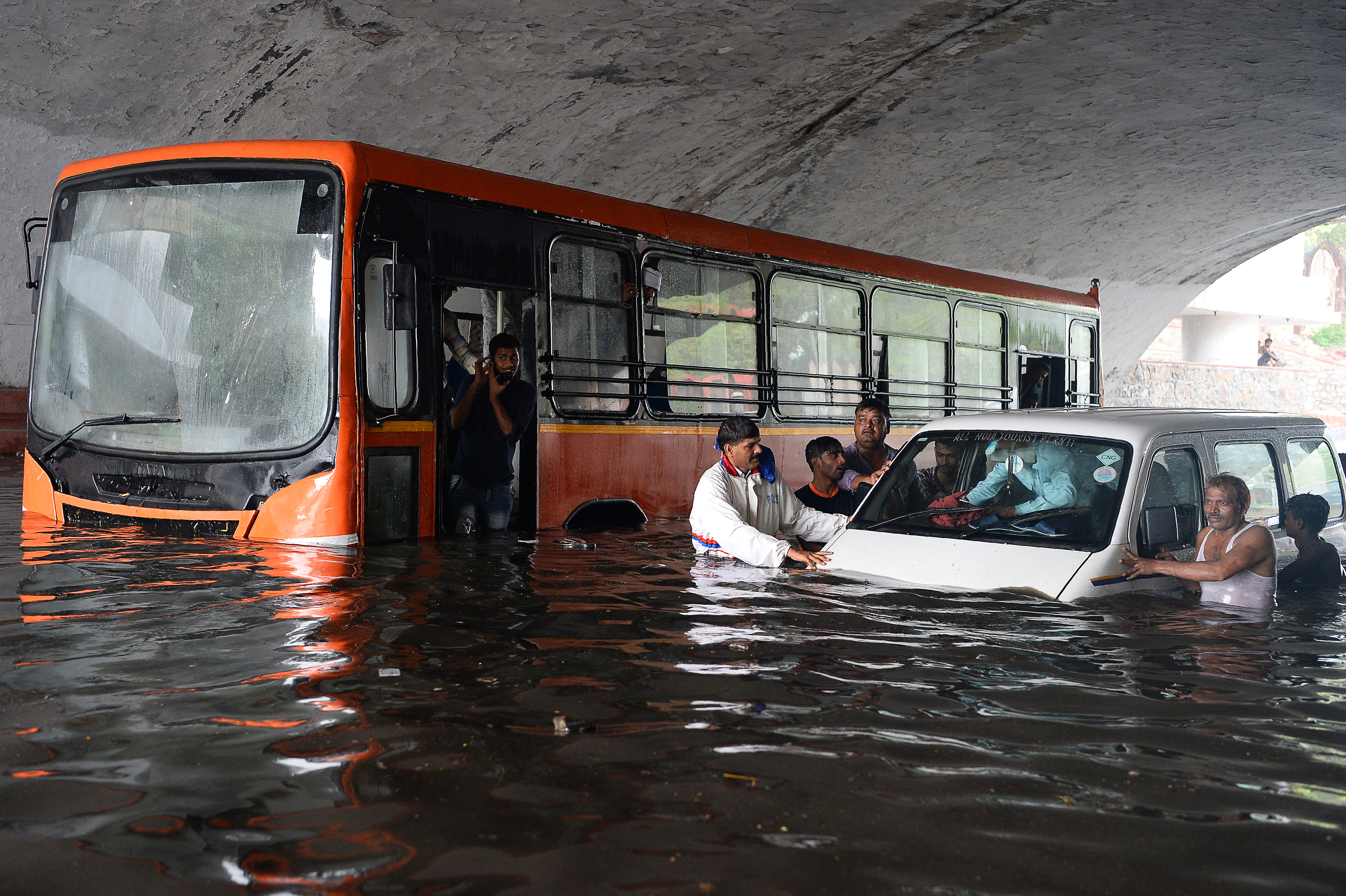The capital’s drainage system has retained the same archaic structure for 42 years, even as the population has increased four-fold
In the scorching heat of the capital, while everyone is ardently praying and hoping for rainfall to get some relief, the city isn’t quite ready for the subsequent waterlogging that will follow soon. It takes perhaps less than an hour’s precipitation for the city to be submerged and bring its traffic to a standstill.
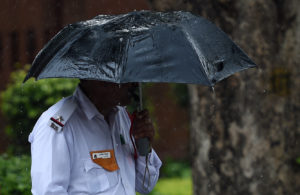
The last Drainage Master Plan was drafted by the Delhi Government way back in 1976. Since then, the city has changed a lot: there have been new roads, the population has increased, but the drainage system remains the same archaic structure it was 42 years ago.
In 2012, the Department of Irrigation and Flood Control of the Sheila Dixit-led Delhi government had tasked IIT Delhi with creating a new master plan, a draft of which was ready and sanctioned in 2016. The final master plan was ready by June 2018, but the government is yet to give the plan its go-ahead. Thus our drains remain the way they were in 1976.
The IIT Delhi report says there are major problems with the “dilapidated” design of the drains in the 1976 Master Plan. The stormwater drains in all the three major drainage basins in the city— the Trans Yamuna, Barapullah and Najafgarh basins—have the wrong slope, which takes the water away from its natural downstream flow, i.e the excess rainwater doesn’t flow into the main sewage drains naturally. It has to be pumped back.
So, at each major waterlogging juncture, pumps have to be installed. However, the report says it’s very common for the pumps to fail every now and then. As a result, the excess water stagnates at that point and creates waterlogging.
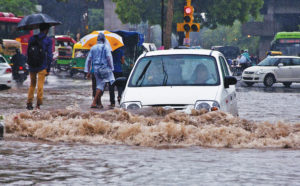
Even in a report published by the Public Works Department titled “PWD Flood Control Order 2019”, the status of many pumps in areas prone to major waterlogging like the Moolchand underpass, Nizamuddin subway and Badarpur have been deemed “defective” or “out of order”.
In addition to this, the IIT report states that the massive inflation in the city’s population over the past few decades has affected Delhi’s drainage system. Back in 1976, when the Drainage Master Plan was formulated, the population of Delhi was around 41 lakh. Forty-two years later, Delhi’s population has increased four times to 1.7 crore (according to the 2011 census), but the drainage plan remains the same.
As a result of this increase in population, there has been rapid unplanned urbanisation leading to building of houses, pavements and parking lots by encroaching these drains. The NGT had asked the Irrigation and Flood Control Department of the Delhi government to submit a status report of the 201 major drains that were demarcated in the 1976 Master Plan, out of which 183 were functional. So, 18 drains have simply vanished and the IIT report suggests that this happened due to urbanisation.
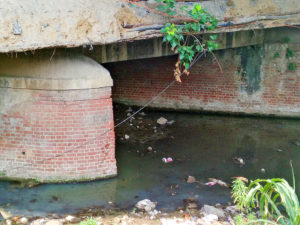
Another major problem is that there aren’t adequate sewage drains in the city. The excess sewage flows into the stormwater drains, choking them and leading to waterlogging due to siltation of the drains. All the three municipal corporations — the NDMC , SDMC and EDMC — and the PWD have undertaken a mass desiltation drive across the whole city which started from April 15 keeping in mind the arrival of monsoon.
In a meeting in mid-June with PWD officials, minister Satyender Jain expressed his displeasure with the whole process, and asked them to accelerate their operations setting a deadline on July 22.
Abhishek Raj, Executive Engineer, PWD, said on July 1 that all the 1,084 drains that are under the PWD have been desilted after the initial deadline of the process had been set to June 30. “All of the major drains in the city have already been desilted,” he said.
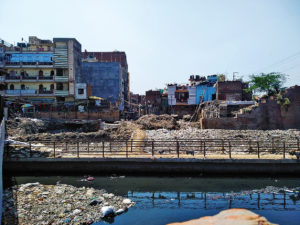
The latest report by the PWD on the status of desilting in the city has made several tall claims. As per the report, the percentage of silt removed in North Delhi is 93.93 per cent and that of SDMC stands at 113.3 per cent. But when we went to check one of the major drains that fall under the PWD, the Barapullah nullah, we found the area strewn with garbage.
It was evident there’s still a lot of work to be done. However, even in their website, the PWD specifically claims they have completely cleared the Barapullah drain.
It was the same case with the Najafgarg zone. While the PWD report claims that 111.46 per cent of silt has been removed, a resident of the area rubbishes the claim.
In the report, the progress of work in most of the areas in EDMC is stated to be well over 100 per cent. But here too the situation on the ground seems different. While they claim that 94 percent of the work is complete, when we visited the Seelampur canal in Old Seelampur near the metro station, the situation is similar to the Barapullah nullah. Garbage is overflowing with an unbearable stench. The residents of the area are dreading the monsoon, stating that this is a regular situation for them for over a decade now.
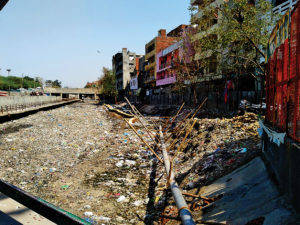
There are several agencies in Delhi that manage the stormwater runoff ,which is carried by a total of 426.55 km of natural drainage lines and 3,311.54 km of engineered storm water drains. The 11 bodies are the Irrigation and Flood Control, Public Works Department, South Delhi Municipal Corporation, North Delhi Municipal Corporation, East Delhi Municipal Corporation, New Delhi Municipal Council, Delhi Development Authority, Delhi State Industrial and Infrastructure Development Corporation, Delhi Cantonment Board, NTPC Ltd and Uttar Pradesh Irrigation Department. This naturally leads to confusion and problems in coordination, which results in a never-ending blame game. This in turn was a challenge when we reached out to several departments, only to be deferred to another.
Centre of disaster
The Delhi High Court last year appointed a panel to look into the difficulties of drainage of stormwater and sewage in the city. Citing news reports of waterlogging and traffic disruptions across the city, the court made special reference to photos of a bus submerged under the Minto Bridge.
An inspection report of vulnerable points of waterlogging conducted by the PWD on May 30 claims that a 2400-mm diameter sewer line running along the BJP headquarters was damaged during the construction of a boundary wall of the building in 2018. As per the report, the Delhi Jal Board had blocked the existing sewer line for security concerns which has now been cleared.
According to the Delhi Jal Board, this blockage has been the primary reason for the waterlogging in Minto Bridge. The inspection report too states that following the clearance, “no severe problems of water logging of Minto Bridge and DDU Marg was noticed afterwards”.
However, the walls were erected leading to the blockage only last year, while the waterlogging at Minto Bridge has been an annual affair for over the past decade. Despite several attempts from these reporters, neither the DJB nor the PWD cleared our query regarding the reason for waterlogging.
Explaining the probable causes and the solutions to this incessant problem, Bhaskar Gowd of the Transport Planning Department from the School of Planning and Architecture breaks it down.
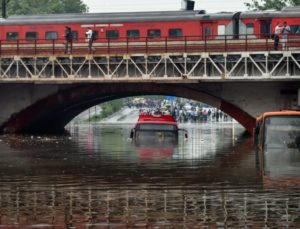
“The increase of paved areas (concrete in pavement and roads) reduces the absorption capacity and it goes down to two percent. So, the 98 percent of water that falls on the paved area has to go through the drains. If these stormwater drains are not properly maintained, the run-off cannot happen smoothly. Thus, the rain water coming to a natural slope gets collected and it leads to a ponding situation,” says Gowd.
Since the area is already paved, there is not much that can be done about it, and the remedial process would be to discharge the water out of the area. One has to keep in mind that the discharge rate should be equal to the arrival rate.
“We have to identify the catchment area and it requires slope analysis. When this is identified, we can estimate the flow of water coming in to the area, which depends upon the rainfall intensity and duration. Following this we have to create an artificial ponding to get rid of the logging,” he adds.
Gowd points out two possible way to get rid of logging: to create an underground reservoir in the vicinity or to have a separate pumping system.“Since the discharge rate is not equal to the arrival rate we have to induce the discharge and arrange a pumping system which can discharge it to the nearest high capacity storm water drain.”
The other option is to create a perpendicular drain with have a grill system at the onset of the slope. After the water gets collected, it will be transferred to an off-street location pit or reservoir. “Take the example of Moolchand, it has set up this kind of facility which diverts the water to a neighbouring storm water facility. Even in the underpass near Great India Place in Noida you will find the grills. Wherever there is an underpass it is mandatory to have such kind of facility and also maintain it. Since the level of an underpass goes below 3.3 metres from the main road, it is a guideline that needs to be followed.”
Gowd states that even with such facilities it is important to maintain them and timely action needs to be taken. “The solution is simple; the implementation and execution is the problem,” he concludes.

